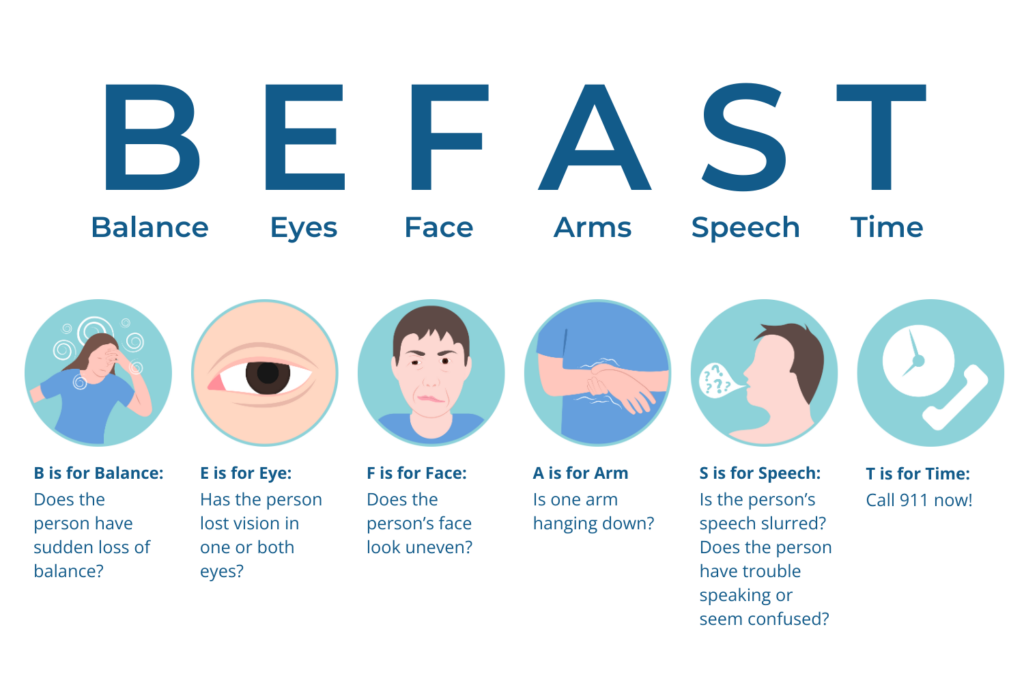Recognizing the Signs of Stroke

The Centers for Disease Control and Prevention (CDC) note stroke to be a leading cause of death in the United States. The impact of suffering a stroke is not just physical but also causes devastating impacts on our finances, long term goals and our families. Some important questions to ask yourself are:
- Do I know what to do if someone I am with is exhibiting stroke-like symptoms?
- Am I up-to-date on the signs and symptoms of a stroke?
- What are my risk factors for having a stroke?
Time is the most important factor in seeking medical treatment if you think you or someone you’re with is having a stroke. It is important to seek immediate medical care if you suspect a stroke. By taking quick action, you could help save a life and give the best chance of recovery from a stroke.
You may be familiar with the acronym F.A.S.T when looking for signs of stroke:
- Facial Drooping
- Face looks uneven
- Arm Weakness
- One arm hanging down
- Speech Difficulty
- Slurred speech and/or trouble speaking or confusion
- Time to Call 911
These warning signs are recommended by the American Heart Association, along with two additional signs:
- Balance
- Is there a sudden loss of balance?
- Eyes
- Has vision been lost in one or both eyes?
Altogether this creates the B.E.F.A.S.T. tool used by many healthcare organizations to recognize a stroke.
If you or anyone around you were to suddenly develop any of these symptoms, call 911. For more information, fact finding or resources, please visit www.heart.org
